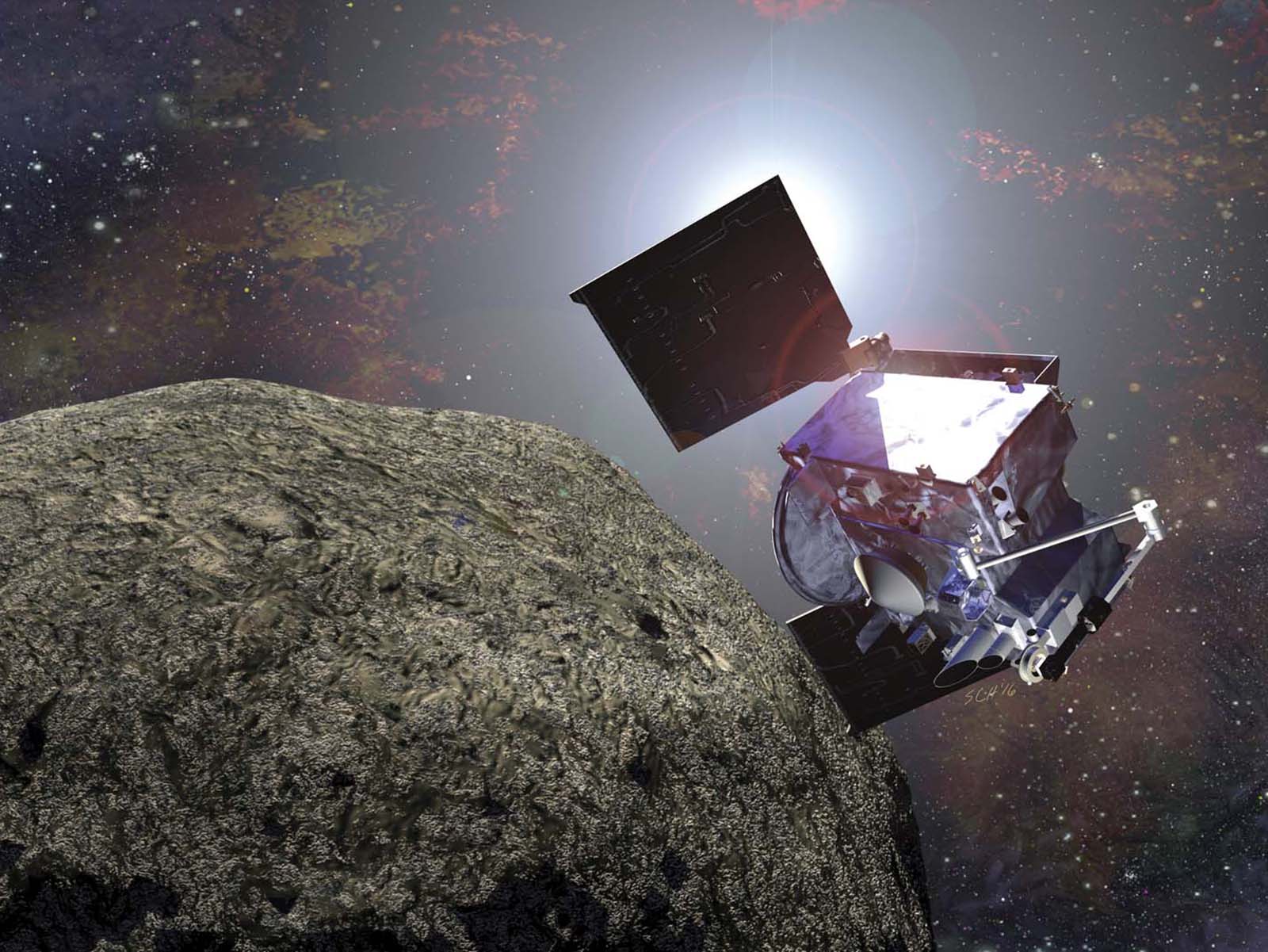The Local newsletter is your free, daily guide to life in Colorado. For locals, by locals.
For about a week in September 2017, amateur astronomers could have peered through their telescopes and glimpsed not just planets and satellites, but also a spacecraft on an unprecedented mission. The Osiris-Rex probe, designed at and operated from Lockheed Martin’s Littleton campus, had spent a year flying around the sun and turning toward home. It used Earth’s gravitational field like a slingshot to accelerate around our planet. The maneuver tweaked the angle of Osiris-Rex’s path so it lined up with its destination: an asteroid hundreds of millions of miles away. Now comes the hard part.
On December 3, Osiris-Rex will finally reach Bennu, a small asteroid astronomers believe is a fragment left over from the formation of our solar system. The NASA-funded mission is America’s maiden attempt to collect asteroid material. (Japan became the first country to retrieve an asteroid sample in 2010.) But Bennu isn’t made up of just any old celestial dust. Its particles, scientists contend, could provide clues to Earth’s original components, potentially enhancing our understanding of evolution—and where other organisms might exist in the universe.
Yet there are several things that could go wrong before Osiris-Rex returns to Earth. First, American operations teams have never steered a spacecraft in gravity as low as Bennu’s. Although they’ve completed extensive modeling, there’s still some uncertainty about how low gravity and other factors, such as solar radiation, will affect Osiris-Rex’s performance. Second, collecting “regolith”—loose material on the surface of an object in space—isn’t as easy as scooping up a mound of dirt. Because of the low gravity, scientists were concerned about the spacecraft’s ability to land on the asteroid, gather the sample, and leave safely. To get around the problem, Lockheed Martin’s Colorado-based engineers designed a mechanism that will extend about 10 feet from the spacecraft, touch down on Bennu, and collect the particles, all in just a few seconds.
Despite its short stay, what Osiris-Rex brings back could have epic implications. Upon its return on September 24, 2023, investigators will begin analyzing the regolith. Astronomers, who have been studying Bennu since its discovery in 1999, are fairly sure the asteroid contains carbon, the fundamental building block of life. In fact, scientists chose Bennu for this mission because they believe the minerals that comprise Bennu might be similar to those that created Earth, ingredients we’ve been unable to pinpoint because geologic events, such as volcanic activity, have transformed our planet into something quite different from what it was at birth. Determining the basic materials (in addition to carbon) that were present during the formation of our life-giving planet could help fill gaps in humans’ grasp of evolution, says Beau Bierhaus, one of the science co-investigators on the mission.
At the same time, knowing the geological recipe that eventually led to life on Earth could help us figure out where to look for other signs of life. Instead of having to scan the entire universe for galactic relatives, scientists could pinpoint celestial bodies with compositions similar to Bennu’s and propose missions to explore them. Then it’s just a matter of waiting for the little green men to pop out and say hello.









